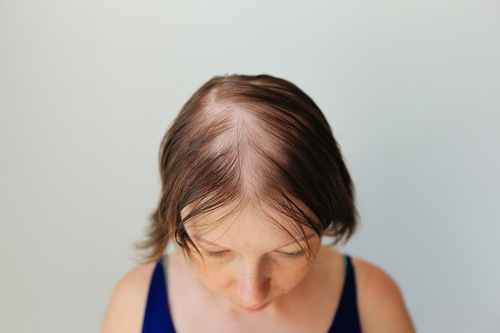Equillium, Inc.’s EQ101 performed well in adults with moderate, severe or very-severe alopecia areata (AA), according to topline data from a Phase 2, single dose, proof-of-concept study.
EQ101 is a novel multi-cytokine inhibitor with a targeted mechanism of action against interleukin (IL)-2, IL-9 and IL-15, which are key drivers of the pathogenic T cells implicated in AA.
The primary objectives of the study were to evaluate the safety and tolerability profile of EQ101, as well as signs of efficacy using Severity of Alopecia Tool (SALT) scores.
The study demonstrated a favorable safety and tolerability profile with no serious adverse events (SAES), and improvements in SALT scores above the published historically low placebo response rates. Of all subjects that completed 24 weeks of treatment (baseline SALT of 35 to 100, n=25), 20% achieved a SALT score of less than or equal to 20 by week 24. Of those subjects with moderate to severe AA at baseline that completed 24 weeks of treatment (SALT score 35 to < 95, n=17), 29% achieved a SALT score of less than or equal to 20 by week 24, and a mean SALT improvement from baseline of 18%.
“The results from this Phase 2 proof-of-concept study of EQ101 in alopecia areata patients are very compelling,” says principal investigator, Rodney Sinclair, MD, a dermatologist at Sinclair Dermatology in Melbourne, Victoria, Australia, in a news release. “Placebo rates in this indication across studies have been consistently low – generally less than 10%of patients achieve a SALT score of 20 or less. To have 20% of patients completing the study reach a SALT score of less than or equal to 20 across all subjects, and 29% of moderate and severe patients, is a very encouraging sign of drug activity,” he says.
“With Janus kinase inhibitors currently the only approved therapies to treat alopecia areata, a significant unmet need remains for novel drug mechanisms that are effective and well tolerated; and the targeted multi-cytokine activity of EQ101 represents a welcome approach.”
To be eligible for the Phase 2 study for the treatment of AA, subjects were required to have at least 35% scalp hair loss due to AA, as measured by SALT, and a current hair loss episode of at least six months, but not more than seven years. The study enrolled 36 subjects at multiple clinical trial sites, with a mean baseline SALT score of 76.
Twenty-five subjects completed the study; 11 subjects discontinued the study early, of which only five were attributed to adverse events. Throughout 24 weeks of treatment and 4 weeks of follow up, EQ101 was well tolerated with no SAEs and no notable changes in safety laboratory (coagulation, hematology, chemistry, liver function, urinalysis, cholesterol), electrocardiogram, vital signs, or physical exam findings were reported. The majority (98.9%) of adverse events were Grade 1 or 2, with the most common being upper respiratory tract infection, headache and fatigue. The two (1.1%) Grade 3 events in two subjects considered related to study treatment were a case of transient lymphocytopenia and fatigue.
In addition to these compelling signs of clinical activity, preliminary data indicate reductions of cell surface CD132 on both CD8 and NK cells in peripheral blood consistent with EQ101 target engagement and pharmacodynamic response.
“We are very pleased with these positive clinical results, indicating EQ101 to be well-tolerated and clinically efficacious in alopecia areata patients with significant hair loss,” says Maple Fung, MD, Chief Medical Officer at Equillium. “We look forward to transitioning to a subcutaneous delivery in placebo-controlled, dose and regimen optimization studies where we expect to continue to investigate EQ101 across alopecia areata disease severity subgroups, including the important population of moderate patients with a SALT score between 35 and less than 50.”
Dr. Fung continues, “though hair loss is lower in patients with moderate disease, the impact on their quality of life is very much in line with more severe patients, yet current systemic Janus kinase inhibitor therapies are only approved for patients with severe disease.”


